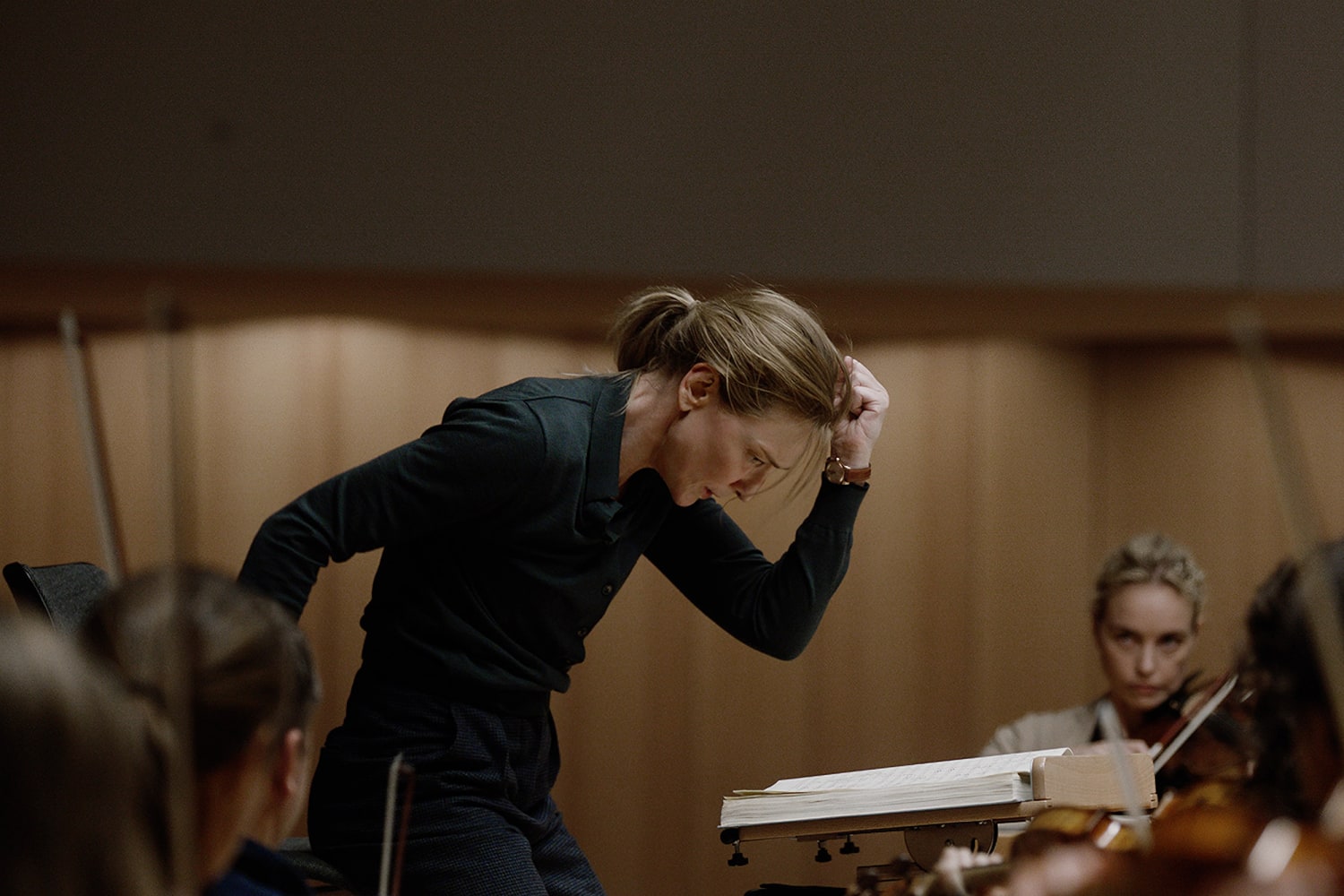Films about lesbians don’t tend to end well. From the 1936 film “Dracula’s Daughter,” about a female vampire who secretly craves women, to 1961’s “The Children’s Hour,” where a schoolteacher played by Shirley MacLaine commits suicide after she’s accused of being a lesbian, to 2003’s “Monster,” for which Charlize Theron won an Oscar for playing a street prostitute and killer who dies by lethal injection, there are no happy endings.
Why did Field create Tár as a lesbian rather than a straight woman, or one of the great men themselves? The film wouldn’t be as fascinating, as psychologically intriguing.
As a rule, in these films and dozens of others, lesbians live miserable lives (see “Ammonite” with Kate Winslet). They are ostracized and endure tragic, heartbreaking relationships (“Portrait of a Lady on Fire”). The films, however sympathetic, leave us with images of toxic women, broken relationships and sad endings, even if much of the misery is due to other people’s cruelty and prejudice.
Now we have “Tár,” with the magnificent Cate Blanchett playing Lydia Tár, her second major role as a lesbian after her Oscar-nominated turn in “Carol.” She was recognized for her standout performance on Monday with a Golden Globe nomination, and Oscar consideration is sure to follow. The movie also received a best motion picture and best screenplay nod.
In “Tár,” Blanchett plays the Berlin Philharmonic’s fictional director, an artistic genius and intimidating force. She is in her 50s, with an eye for pretty female underlings and protégées who seem willing to reciprocate but, like nearly everyone else around her, fear her and her rejection. Even if there’s no physical force, the power equation is not in the young women’s favor. Once Tár is done, she brushes them off and turns against them, ruining their careers.
The decision by director and screenwriter Todd Field to make Tár a lesbian unsettled me. I feared that the film would perpetuate a negative toxic lesbian stereotype. But I changed my mind after seeing it. The film’s core is not so much about a lesbian predator but about the more general use and abuse of power, including sexual power, that Lydia wields at will.
But it also explores how that power comes to hurt Lydia as well. Her arrogance and control of an elite world where she is unchallenged blind her to herself and her sexual games. There’s little question that her young female peons are drawn to her, attracted to her power and desire her desire. So when, toward the end of the film, a young cellist rejects her, it comes as a shock.
Blanchett’s Tár also doesn’t realize that her relationships with these young women are abusive, no more that she sees her cruel mistreatment of her veteran assistants as abuse either. In her eyes, she is only asserting privilege, like the great men she admires and tries to imitate, who enjoyed unchecked power, who walked through a room as if they owned it. She doesn’t think about the limits of her power because she has no limits. She believes that her artistic brilliance excuses her disruptive force, her sexual misconduct, her infidelity, even the scary way she bullies a schoolmate of her adopted daughter.
So why did Field create Tár as a lesbian rather than a straight woman, or one of the great men themselves? The film wouldn’t be as fascinating, as psychologically intriguing. We have seen not a few films about overpowering men and scheming, seductive straight women. “Tár” is different, daring to put a lesbian in the role of genius and villain. At the same time, this choice is in some ways an equalizer: Relationships among all sexes and genders should be on equal footing and giving critical examination to a lesbian character helps do so.
Of course, Blanchett’s Tár has no equal in her rarefied intellectual and artistic world. Everything about her is exceptional: her sexuality, her genius, her career, her custom-made suits. From the outset, her character occupies center stage, literally. The film opens at the elite New Yorker Festival, where the writer Adam Gopnik, playing himself, recites a long list of her accomplishments while she listens smiling, relaxed in her chair, supremely at ease in her body, in that company.
And why not? She is the first female chief conductor of the great Berlin Philharmonic, she has won Emmy, Grammy, Oscar and Tony awards, is publishing an autobiography titled — what else? — “Tár on Tár,” and is soon to conduct a landmark live recording of Gustav Mahler’s “Symphony No. 5.” Her intoxication with herself, her grandeur, her passion for music (the only true passion she feels) makes everyone around her small, insignificant.
Tár’s relationship with her assistant Francesca (Noémie Merlant of “Portrait of a Lady on Fire”) is a case in point. Francesca has musical ambitions and depends on Tár to help her career. It’s not clear that they had a sexual connection, but we assume they did, and now that Tár has tired of her, Francesca is sidelined, a nobody.
But it turns out that Tár can’t shake these underlings so easily. She is hounded by a former protégée and paramour, Krista, whom we see only in flashes. Tár has dumped Krista, and refuses to see her, but Krista pleads, sends gifts. When Krista commits suicide, the inquest looks into her relationship with Tár, threatening Tár’s untouchable reputation.
It seems nearly impossible to envision anyone else in the role. The Golden Globes’ judges will err if they don’t choose her for the highest acting honors.
In the end, though, it’s Tár’s own appetites that do her in. When she falls for a young Russian cellist, Olga, who has just arrived in Berlin, she passes over a senior cellist to give Olga the coveted spot. But once she gets what she wants, Olga rejects Tár. So begins the end.
Despite this dalliance and Tár’s other seductions, the film is not about a predatory lesbian. The sexual aspect is only one element. Over two hours and 38 minutes, “Tár” has no graphic sex scenes, and the main character’s affairs seem like dalliances rather than all-consuming passions. In the end, we are not sure she is really guilty of sexual harassment and abuse, whether she deserves public condemnation.
Does the film, and Blanchett specifically, change the negative image of lesbians on screen? I think it does. It gives us a conflicted, multifaceted image, one that’s more compelling and complex, more alluring. It has almost everything to do with how Blanchett conveys that in her performance. Her Lydia Tár is almost irresistible, and it seems nearly impossible to envision anyone else in the role. The Golden Globes’ judges will err if they don’t choose her for the highest acting honors.
“She burns like a cool flame,” The New Yorker critic Anthony Lane wrote. Even in the final scenes, when there’s so little of the fire left in her, she has an aura, a defiant presence. She stays with you long after the screen goes black. It’s a searing image, with its ravages and greatness, that defies stereotypes and is simply about being human.
Source: | This article originally belongs to Nbcnews.com











